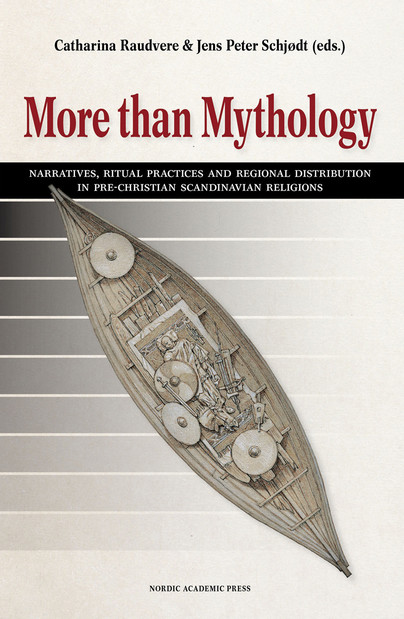
Format: Hardback
Pages: 350
ISBN: 9781907586149
Pub Date: 31 Oct 2012
Imprint: MOLA (Museum of London Archaeology)
Series: MoLAS Monograph
Description:
The development of the major settlement of Lundenwic in the late 7th century AD marked the rebirth of London as a town. In the following century the emporium served as a seaport for the landlocked kingdom of Mercia and played a significant role in the maritime trade of north-west Europe. This monograph provides the first detailed overview of the archaeological evidence for the trading port, placing it in its regional, national and international context.
The results of fieldwork at 18 locations on the site of the former Middle Saxon settlement are followed by essays on various aspects of the settlement, including its geographical setting, activity pre-dating Lundenwic (which includes one or more cemeteries), the development, size and layout of the emporium, food production and consumption, crafts and industry, trade, dress and religion. The final section focuses on finds assemblages recovered from the settlement, including ceramics, glass, metal, and bone and antler artefacts, as well as human, animal and plant remains. Radiocarbon dates interpreted by Bayesian modelling are found to broadly accord with archaeological evidence for rapid settlement growth in the third quarter of the 7th century AD, and the first use of Ipswich ware (an important chronological marker) in London c AD 730. The volume also includes a gazetteer of sites and a timeline for the settlement and its hinterland.

Format: Hardback
Pages: 358
ISBN: 9781902937618
Pub Date: 01 Oct 2012
Imprint: McDonald Institute for Archaeological Research
Series: McDonald Institute Monographs
Illustrations: Illus.
Description:
Quoygrew - a settlement of farmers and fishers on the island of Westray in Orkney - was continuously occupied from the tenth century until 1937. Focusing on the archaeology of its first 700 years, this volume explores how 'small worlds' both reflected and impacted the fundamental pan-European watersheds of the Middle Ages: the growth of population, economic production and trade from the tenth to the thirteenth centuries and the subsequent economic and demographic retrenchment of the fourteenth to fifteenth centuries. Concurrently, it addresses the nature of island societies, with distinctive identities shaped by the interplay of isolation and interconnectedness.

Format: Hardback
Pages: 184
ISBN: 9781842174845
Pub Date: 28 Sep 2012
Illustrations: b/w and colour illustrations
Description:
The excavation of an area within the grounds of the Prebendal, Aylesbury, Buckinghamshire, adjacent to the parish church of St Mary's, showed that the town, which lies on a slight spur, is sited within a univallate Iron Age hillfort. Early-Middle Iron Age activity included the creation of a notable ritual area contaning the burials of four children and a young woman, most accompanied by animals; and a 'bone mass' containing animal bone, mostly disarticulated. Within a generation or so of the deposit's creation, within the first half of the 4th century BC, a univallate hillfort was constructed which did not continue into the later Iron Age.
Early in the Middle Saxon period a palisade trench was dug into the hillfort's ditch, which was replaced by a ditch in the 8th century. Both palisade and ditch were almost certainly the boundaries of an early minster church and it is very likely that the former existence of the hillfort influenced its siting here. An unusual piece of Merovingian glass with a moulded cross on its base is likely to have been one of the minster's possessions. The extensive minster cemetery and later Saxon development of the town is briefly noted. A significant Saxo-Norman grain deposit which has been radiocarbon dated to the 11th-12th centuries is described.

Format: Paperback
Pages: 250
ISBN: 9781907586125
Pub Date: 30 Jul 2012
Imprint: MOLA (Museum of London Archaeology)
Description:
This guide to the unique theatrical venues of London, from 1567, when the first playhouse was built, to 1642, when Cromwell closed them down, sets out the rich dramatic history of this period in relation to the latest exciting archaeological evidence. The book also details the people involved - the builders, actors, playwrights and audiences - what they wore and what they ate, where they drank, where they fought, where they lived and died. There are theatrical quotes and jokes, and illustrations old and new, while a series of walks explores different areas of today's London, where glimpses of Shakespeare's London can still be caught.
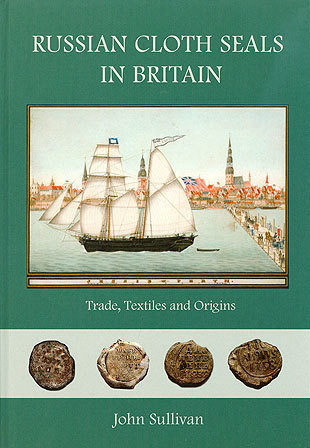
Format: Hardback
Pages: 224
ISBN: 9781842174654
Pub Date: 15 Jun 2012
Illustrations: col & b/w illus
Description:
For many decades in the 18th and 19th centuries, Russia was the world's greatest exporter of flax and hemp and Great Britain its major customer. Most studies of flax and hemp and their associated industries have hitherto concentrated on the economic and historical events surrounding the rise and fall of these industries in Britain. This book is based on a large body of new material consisting of lead-alloy seals that were attached to bundles of flax and hemp exported from Russia and aims chiefly to describe the different seals that were used and to explain the reasons why they were employed.
It offers a short history of their use, a guide to their identification and a catalogue of items recovered in Britain, opening up a valuable new source of material for analysing a different aspect of the history of commercial relations between Russia and Britain and providing assistance for finders and museum curators in identifying and deciphering these objects correctly. The text guides the reader through the different types of seal so far recorded using illustrations, transliterations of the Cyrillic texts found on the seals and explanatory tables, as well as a comprehensive catalogue. Analysis is conducted of the information found in the seals. This information provides us with a picture of the manner in which the export of these products from Russia to Britain was handled and allows us to make comparisons over different periods of time and to analyse the different systems of quality control used. It also enables us to record the geographical distribution of Russian ports used for the export of flax and hemp to the UK, where the spread of their distribution tells us something of the redistribution of these imports and provides an understanding of the use to which their by-products were put as part of the agricultural practices of the 18th and 19th centuries.

Format: Paperback
Pages: 600
ISBN: 9789088900778
Pub Date: 30 Apr 2012
Imprint: Sidestone Press
Description:
German Description: Im Fruehjahr 1951 berichteten alle Zeitungen in den Niederlanden von einer international bedeutenden archäologischen Entdeckung: der Ausgrabung eines groáen fruehmittelalterlichen Gräberfeldes bei Rhenen in der Provinz Utrecht. Das Reihengräberfeld auf dem Donderberg umfasste mehr als 1100 Gräber, die vom vierten bis zum achten Jahrhundert datieren. Es wurden auf einer Gesamtfläche von etwa 1250m etwa 300 Brandbestattungen und 820 Körperbestattungen dokumentiert, darueber hinaus 14 Pferdegräber.
Circa 830 Gräber enthielten Beigaben, insgesamt 3000 Objekte: davon ueber 850 Keramikgefäáe, Dutzende von Glasgefäáen, wie Becher und Schälchen, auáerdem Hunderte von Objekten die den Kategorien Schmuck, Perlen, Waffen und Werkzeuge zuzuordnen sind. Das Gräberfeld befand sich an der Westflanke einer Moräne, die im fruehen Mittelalter intensiv bewohnt und genutzt wurde. Der Donderberg war ein bedeutender Ort, den die Menschen ueber Jahrhunderte ihrer Bestattungsriten wegen immer wieder aufsuchten. In diesem Bereich hat die Gemeinschaft an der gleichen Stelle und nahezu in der gleichen Weise während vier Jahrhunderten - das entspricht etwa zwanzig Generationen - von etwa 375 bis 750 nach Chr. ihre Toten bestattet. Dieser Zeitraum umfasst den Übergang von der Spätantike ueber die Zeit der Merowinger/Franken bis zum Beginn des Christentums in den Niederlanden. Das Gräberfeld von Rhenen ist eine reiche Quelle fuer die Untersuchungen zu Kontinuität und Wandel in der Völkerwanderungszeit. Trotz der internationalen Aufmerksamkeit, die die Ausgrabungen im Jahre 1951 fanden, blieben die Funde aus Rhenen weitgehend auáerhalb des Blickfelds und fanden damit in vergleichenden Studien und Verbreitungskarten zumeist keine Beruecksichtigung. Genau sechzig Jahre nach der Ausgrabung dieses wichtigen, unweit der deutschen Grenze gelegenen Gräberfeldes sorgt der vorliegende wissenschaftliche Katalog endlich fuer eine vollständige Materialvorlage der Gräber vom Donderberg. English Description: In the spring of 1951 Dutch newspapers wrote about an archaeological discovery of international importance: the excavation of an enormous early medieval cemetery near Rhenen (province of Utrecht). This 'Reihengräberfeld', situated on the 'Donderberg', contained over 1100 graves that were dated between the fourth and eighth century A.D. Around 830 graves contained artefacts including over 850 ceramic pots, numerous fragments of glass objects and hundreds of pieces of jewellery, pearls, arms and tools. This extensive catalogue, describing all 1100 graves separately, is the first publication of this extraordinary archaeological site.
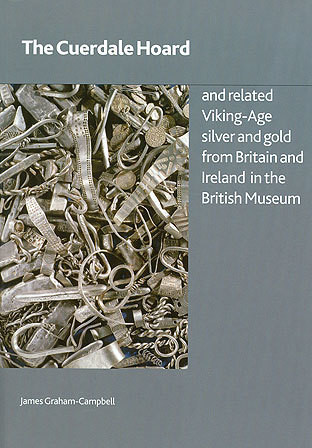
Format: Paperback
Pages: 400
ISBN: 9780861591855
Pub Date: 16 Apr 2012
Imprint: British Museum Press
Series: British Museum Research Publications
Illustrations: 130 b/w line drawings & halftones integrated throughout the volume, with maps and tables and separate plates section
Description:
The catalogue focuses on the entire non-numismatic contents of the Cuerdale hoard (discovered in 1840), together with all the other hoards and single-finds of gold and silver artefacts (ornaments and ingots) of Viking character in the British Museum, found in Britain and Ireland, up to the end of the year 2000, with each piece individually catalogued and illustrated. There is also a full chapter discussing the coins from Cuerdale, together with summary descriptions. Written by the leading authority on the subject, James Graham-Campbell is Emeritus Professor of Medieval Archaeology, University College London and a Fellow of the British Academy.
This catalogue complements both that by D. M. Wilson on the Anglo-Saxon Ornamental Metalwork, 700-1100, in the British Museum (London, 1964) and that by James Graham-Campbell on The Viking-Age Gold and Silver of Scotland (AD 850-1100) (Edinburgh, 1995).
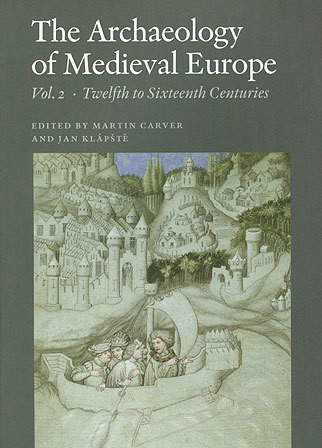
Format: Hardback
Pages: 550
ISBN: 9788779342897
Pub Date: 31 Jan 2012
Imprint: Aarhus University Press
Illustrations: illus
Description:
The two volumes of "The Archaeology of Medieval Europe" together comprise the first complete account of Medieval Archaeology across the continent. This ground-breaking set will enable readers to track the development of different cultures and regions over the 800 years that formed the Europe we have today. In addition to revealing the process of Europeanisation, within its shared intellectual and technical inheritance, the complete work provides an opportunity for demonstrating the differences that were inevitably present across the continent -- from Iceland to Sicily and Portugal to Finland.
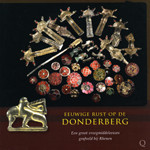
Format: Paperback
Pages: 104
ISBN: 9789088900822
Pub Date: 31 Dec 2011
Imprint: Sidestone Press
Description:
Dutch description: Het rijengrafveld op de Donderberg bij Rhenen (provincie Utrecht) is de grootste, langst gebruikte en mogelijk rijkste vroegmiddeleeuwse begraafplaats van Nederland. Het bevatte ruim 1100 graven uit de vierde tot en met achtste eeuw na Chr.: circa 300 crematies, 820 lijkbegravingen en 14 paardengraven.
Uit de grafkuilen zijn meer dan 3000 voorwerpen geborgen, die zich nu in het Rijksmuseum van Oudheden te Leiden bevinden. Ze vormen opvallend rijke collecties sieraden, kralen, glaswerk, keramiek (meer dan 850 stuks), wapens, werktuigen en hergebruikt Romeins materiaal. Landschappelijk bevindt het grafveld zich op de oostelijke punt van een stuwwal, die ook andere vroegmiddeleeuwse vondsten opleverde, waaronder een goudschat en een muntschat, maar ook rijke prehistorische graven. Op de Donderberg hebben mensen hun doden op hetzelfde terrein en op min of meer dezelfde wijze begraven tussen circa 375 en 750 na Chr., omgerekend zo'n twintig generaties lang. Deze periode omvat de overgang van de Laat-Romeinse tijd naar die van Friezen, Franken, Saksen en de introductie van het christendom. Maar is er iets van die 'etiketten' terug te vinden in de begravingen? Het Rhenense grafveld werd in het voorjaar van 1951 opgegraven. Hoewel wetenschappers, pers en publiek direct het belang van de vondst inzagen, bleef de Donderberg ongepubliceerd. Dit boekje is het resultaat van het Odyssee-project 'Reviving Rhenen', samen met een wetenschappelijke catalogus en een tentoonstelling in Museum Het Rondeel in Rhenen. Samen brengen ze dit omvangrijke vroegmiddeleeuwse complex over het voetlicht, precies zestig jaar na de ontdekking ervan. English Description: The early medieval cemetery situated on the 'Donderberg' near Rhenen (province of Utrecht) is the largest of its kind in the Netherlands. It contained over 1100 graves that were dated between the fourth and eighth century A.D. This book provides insight into the nature of this site and the people that were buried here. Over 3000 artefacts were discovered including ceramic and glass, and also many pieces of magnificent jewellery. Beautiful photographs illustrate this story intended for a broad audience.

Format: Paperback
Pages: 178
ISBN: 9781902771861
Pub Date: 31 Dec 2011
Imprint: Council for British Archaeology
Illustrations: col illus
Description:
Castles, both ruined and occupied, are amongst the most deeply evocative buildings in the Scottish landscape. This book considers the history of the conservation and restoration of a number of those buildings against the background of what the idea of the castle has meant to Scots over the centuries. The authors draw on their extensive knowledge of castles across Scotland, as well as on their practical experience in advising on recent conservation and restoration projects.
They begin by briefly considering the history of castles and by exploring their role in Scottish society, before moving on to consider the ways in which they were absorbed within later building complexes as domestic requirements and social aspirations changed. A series of detailed case studies then examines the issues surrounding the conservation and restoration of castles in modern times, which it is hoped will be of value for everyone with an interest in castles, including those who might be considering undertaking work on one.
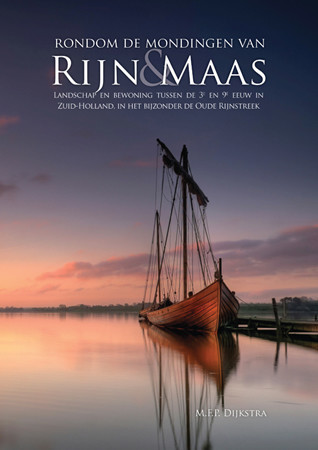
Format: Paperback
Pages: 544
ISBN: 9789088900785
Pub Date: 31 Dec 2011
Imprint: Sidestone Press
Description:
Ductch Description:In de Vroege Middeleeuwen maakte het kustgebied van Zuid-Holland deel uit van West-Friesland. Van menselijke aanwezigheid in deze periode getuigen niet alleen enkele historische bronnen en oude plaatsnamen, maar vooral archeologische vondsten. Dit boek geeft voor het eerst een gedetailleerd overzicht van de bewoningsgeschiedenis van de estuaria van de Oude Rijn en Maas tussen circa 270 en 900 na Chr.
, met tal van nieuwe inzichten. Door de rijkdom aan archeologische gegevens ligt de nadruk op de Oude Rijnstreek. Aan de hand van hoofdstukken over het toenmalige landschap, archeologische vindplaatsen, nederzettingen, huisbouwtraditie en handelscontacten, wordt gekeken welke plaats Zuid-Holland op cultureel en politiek vlak innam ten opzichte van de omliggende gebieden. Daarbij wordt ook ingegaan op de vraag naar de tribale verhoudingen langs de Hollandse kust en wat het etiket 'Fries' daarbij voorstelt. Dit heeft ook gevolgen voor onze kijk op het Friese koninkrijk. Menno Dijkstra (Lisse, 1971) studeerde in 1996 af aan het Instituut voor Pre- en Protohistorie van de Universiteit van Amsterdam, met als specialisatie de archeologie van de Middeleeuwen en Nieuwe tijd. In 1997 begon zijn promotieonderzoek bij het Frisia Project. Dit proefschrift is daar het resultaat van. Momenteel is hij werkzaam als senior archeoloog. English Description: Menno Dijkstra has attempted to reconstruct the habitation history of the western Netherlands (Zuid-Holland) between 270 and 900 A.D. In this book he analyses landscape, archaeological sites, settlements, building traditions and connections through trade. This book sheds new light on Zuid-Holland in the early Medieval period and might change our view of the Frisian kingdom.

Format: Hardback
Pages: 184
ISBN: 9781903470954
Pub Date: 27 Dec 2011
Imprint: Sam Fogg
Description:
In the 1470s, one of the most innovative artists working in Bruges illuminated a Book of Hours for Jean Carpentin, lord of Gravile and prominent citizen of Normandy. Known as the Master of the Dresden Prayer Book after one of his other masterpieces, this artist and members of his workshop enriched the pages of Carpentin’s manuscript with miniatures, historiated initials and boldly colored borders in which human figures, monsters and monkeys are framed by twisting branches of acanthus.
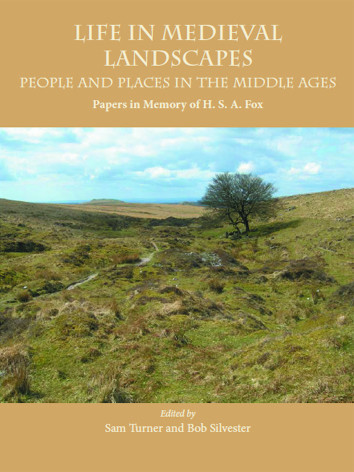
Format: Paperback
Pages: 240
ISBN: 9781905119400
Pub Date: 03 Dec 2011
Imprint: Windgather Press
Illustrations: 50 b/w & 27 col illus, 14 tables
Description:
Life in Medieval Landscapes presents new studies on key themes in the economic and social history of the medieval landscape. The book draws together papers by medieval historians and archaeologists, with contributions by leading scholars in each field. The first part explores the nature of landscape regions in Britain and Ireland.
Chapters explore the use and experience of different types of landscapes including marshlands, uplands, woodland and woodpasture. The papers analyse a wide variety of sources from detailed archival work on medieval records to place-names, archaeological survey and the study of veteran trees. A particular theme in several papers is the exploration of social, economic and spatial marginality. The second part presents new studies of labour and lordship. The contributions focus on medieval England, including aspects of the land market before the Black Death, the organisation of village communities, and how changing settlements related to demography and occupations. There is a particular focus on understanding the lives of peasants and labourers. The main themes of the book reflect the interests of Professor Harold Fox, whose death in 2007 was marked by a number of conferences in different parts of the UK. The papers in this volume have been offered by Harold's colleagues, friends and former research students as a tribute to his work. They showcase some of the best research in the fields of medieval landscape and social history. Contributors include Chris Dyer, Bruce Campbell, Andrew Fleming, Della Hooke, Jem Harrison, Ros Faith, Peter Herring, Mark Gardiner, Angus Winchester, Andrew Jackson, Alan Fox, Mark Page, Mike Thompson, Mike Thornton, Matt Tompkins, Penelope Upton and Richard Jones.

Format: Hardback
ISBN: 9780904152586
Pub Date: 01 Dec 2011
Imprint: British School at Rome
Series: Archaeological Monographs of the British School at Rome
Description:
The San Vincenzo Project began in 1980 as a collaboration with the Soprintendenza Archaeologica del Molise. Its initial focus was the small frescoed crypt of 'San Lorenzo' (later known as the Crypt Church), which was in urgent need of conservation. Over the following eighteen years, a large multidisciplinary project was undertaken involving archaeologists, historians and art historians.
This consisted of major open-area excavations of the early medieval monastery, of which the celebrated crypt proved to be a modest funerary oratory at the northern limits of the site. The project also involved a study of settlement history in the Upper Volturno valley. This book presents the finds of this excavation.
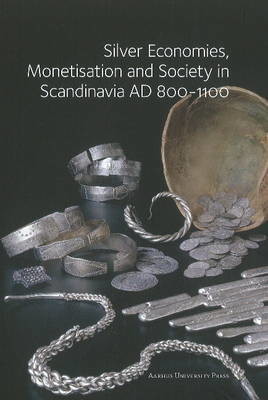
Format: Hardback
Pages: 380
ISBN: 9788779345850
Pub Date: 30 Nov 2011
Imprint: Aarhus University Press
Illustrations: illus
Description:
The Viking Age was a period of great economic complexity and experimentation in Scandinavia. By the end of the period, an ancient 'display' economy, based on ornaments of precious metal, had been largely replaced by counted money and national coinages. But this development was neither simple nor linear: for much of the Viking Age, several silver economies co-existed and interacted.
The role of silver in Viking-age society and economy has recently developed into an exciting interdisciplinary topic for research. New evidence raises debates on the nature of valuables, bullion, monetisation, commodity money, and early urban trade. This book brings together an international group of archaeologists, historians and numismatists to draw a balance sheet of current research. Based on a symposium held in Aarhus, Denmark in 2008, it provides a structured basis for comparison, combining regional overviews with case-studies of significant sites or hoards. The book is dedicated to Dr Mark Blackburn (1953-2011) in recognition of his outstanding contribution to Viking-age numismatics and monetary history.







